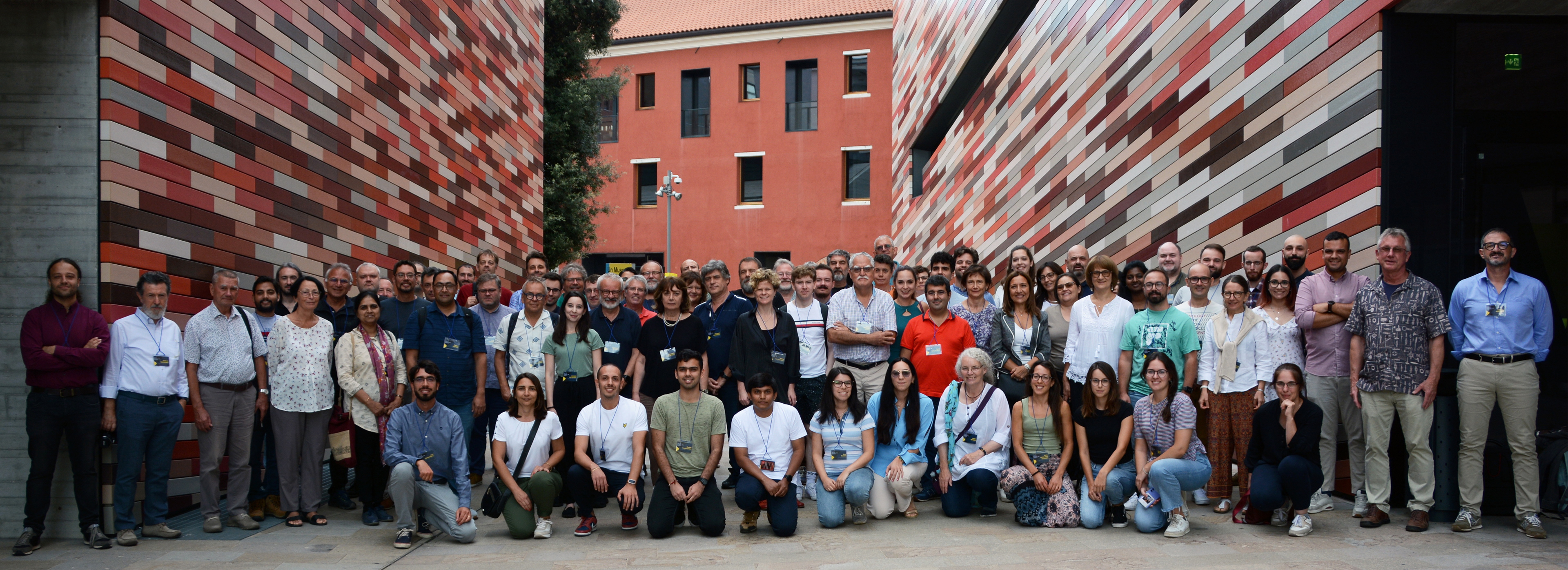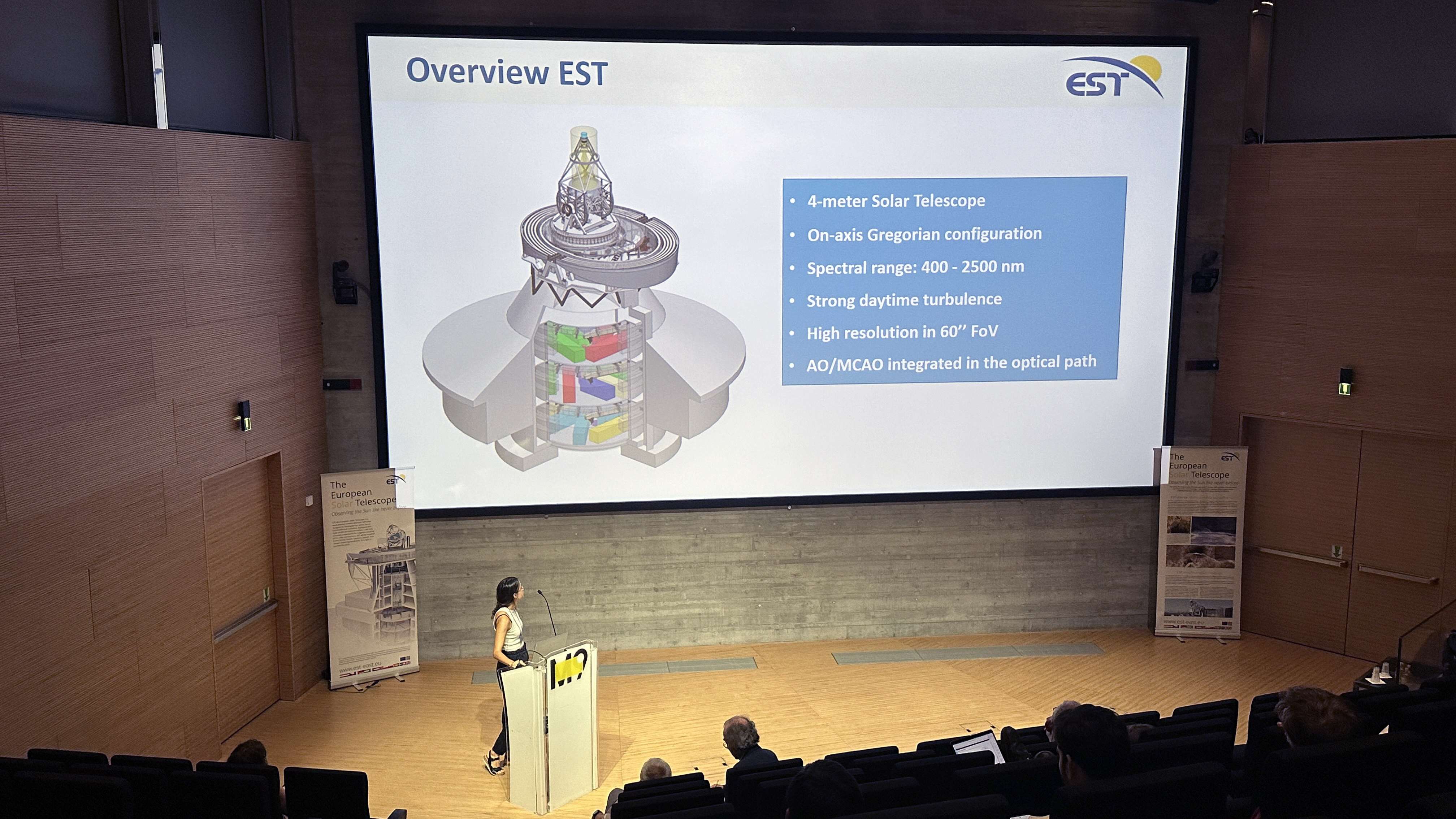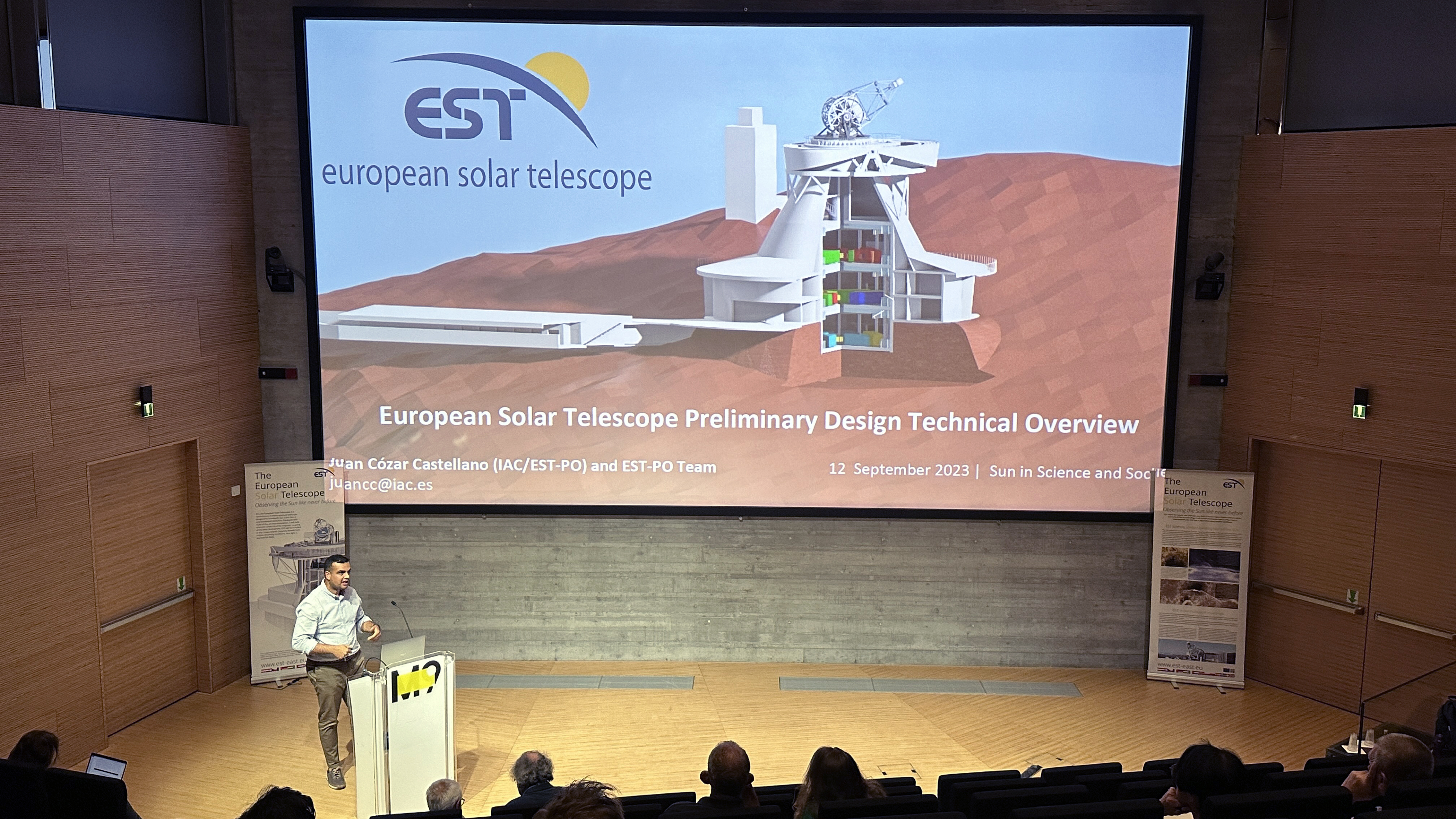Different communities discussed how the Sun is a model for physics and astrophysics.
 Participants in the international conference "Sun in Science and Society" in Mestre, (Italy).
Participants in the international conference "Sun in Science and Society" in Mestre, (Italy).
The conference "Sun in Science and Society", organised as part of the H2020 SOLARNET Project by the University of Rome Tor Vergata and the University of Catania, took place at the Museo del '900 M9 in Venice/Mestre (Italy) from September 11 to 15, 2023. The event aimed to explore the Sun's role as a variable magnetic star and its impact on space climate, space weather, the terrestrial environment, and global technological infrastructure, which collectively influence the global economy.
The conference provided a platform for heliophysics scientists to present the latest advancements in solar theory, the Sun-Earth connection, and forecasting capabilities. It also facilitated discussions between stakeholders and economists who assessed user needs and requirements.
Five days were devoted to delve into various topics related to the world of solar research, ranging from solar activity and its drivers to the impact of solar physics on the economy and society, data for civil society, education, and awareness. Of particular international socioeconomic importance were the more technical insights, where high-resolution ground-based telescopes and technology for solar physics were discussed.
Moreover, this international conference highlighted the Sun as a paradigm in astrophysics, fostering discussions on how recent solar research findings could be applied to other astrophysical contexts. It aimed to identify problems in various fields that could benefit from cross-disciplinary collaboration, encouraging researchers working in solar studies to engage with those from other scientific domains.
The scientific program of the conference featured six sessions:
- Solar Activity and Its Drivers
- Sun, Space, and Society
- High-Resolution Ground-Based Telescopes and Technology for Solar Physics
- Sun, Space, and Society (exploring the solar physics impact on the economy and society, data for civil society, education, and outreach).
- The Sun as a Rosetta Stone for Astrophysics.
- The Sun as a Rosetta Stone for Physics.
 EST presentation at the conference.
EST presentation at the conference.
The conference was a resounding success, drawing 90 participants from both European and non-European countries. Organisers thoughtfully considered geographical representation, gender balance, and the relevance of proposed contributions to the conference's central objectives when defining the scientific program.
The presence of experts from different communities made it possible to describe the contribution that the study of the Sun can give in different fields, including Earth’s climate, space weather and space climate, extrasolar planets, as well as how the Sun constitutes a Rosetta stone in the understanding of a large number of physical processes.
The conference saw an important participation of the EST project. The preliminary design of different EST sytems and subsystems was presented in various talks by members of the EST Project Office. The educational activities of the consortium were also presented by members of the EST Communication Office, as an example of how the Sun can be used to teach different science topics and promote STEM vocations in schools. The “Sun in Science and Society” conference attracted a lot of media attention and triggered an interview to Prof. Francesco Berilli of University of Rome Tor Vergata on the how to understand the cosmos by studying the Sun.
 EST preliminary design presented at the conference "Sun in Science and Society".
EST preliminary design presented at the conference "Sun in Science and Society".
"The Sun is the closest star to us. It is the only astrophysical object that allows us to observe in great detail those physical processes that are present in all the other stars, albeit in different ways. We know that there are much hotter and much colder stars, but let's say that some key processes, especially the magnetic ones, are present in other stars but are not observable", explains Berrilli.
"In the case of the Sun, we are able to study the physics that helps us understand how these processes occur. Major space missions, such as the James Webb Telescope, or future large telescopes like ELT, will attempt to observe the atmospheres of other planets, seeking to understand the possibility of life in other planetary systems. Therefore, the Sun and the planets in the Solar System in some way represent a system that we can observe in great detail. If we wish to study closely how a star communicates with nearby planets and their interactions, not only in terms of light but also in terms of relationships related to the magnetic field, for instance, which is expelled along with coronal material, or particles, and how these interact with different planets, we can understand it by observing the Sun, observing how it interacts with Earth, Mars, Jupiter... So, in our Solar System, we have a wealth of details that allow us to understand how this interaction also works on distant objects.”
"If we want to give an example in the field of physics," Berrilli continues, "we know that we currently cannot produce low-cost, clean energy through nuclear fusion because we cannot stabilise plasmas inside tokamaks. Studying how the star's magnetic field interacts with the atmospheric plasma in the chromosphere and the corona will also allow us to study this instability. So, here, it is a way in which we study astrophysical and physical processes with a natural laboratory, the Sun."
From space to Earth, the Sun influences many human activities, which it is essential to understand its role. The Sun "is important because our planet lives with living with this star. The Sun has a continuous impact on the economy. We have worked with some companies interested in photovoltaics which wanted to know, for example, the effects of a solar eclipse and the effects of solar variability. The Sun is not a calm star; it is magnetically variable and variable in terms of brightness. If it changes, how much does it change? Does it change in the same way in the visible and the ultraviolet? If I build a solar panel, I need to know where to make it more sensitive. The Sun has nothing to do with global warming, but it does impact the climate. It helps us to make nuclear fusion power plants work," explains Berrilli. "The Sun's impact on our society is enormous. Just think about space weather, which refers to all the effects that solar activity can have on technological infrastructures, satellites, GPS, from ATMs to the systems we use on phones to check for traffic or more —these are all high-tech systems impacted by solar activity," adds the physicist. Moreover "thousands of years ago, there were superflares, nothing comparable to the solar activity of recent decades. The last major solar events occurred at the end of the 19th century. If events of that intensity were to occur today, they would be capable of disrupting almost all satellites. We would go back to the 1950s."
